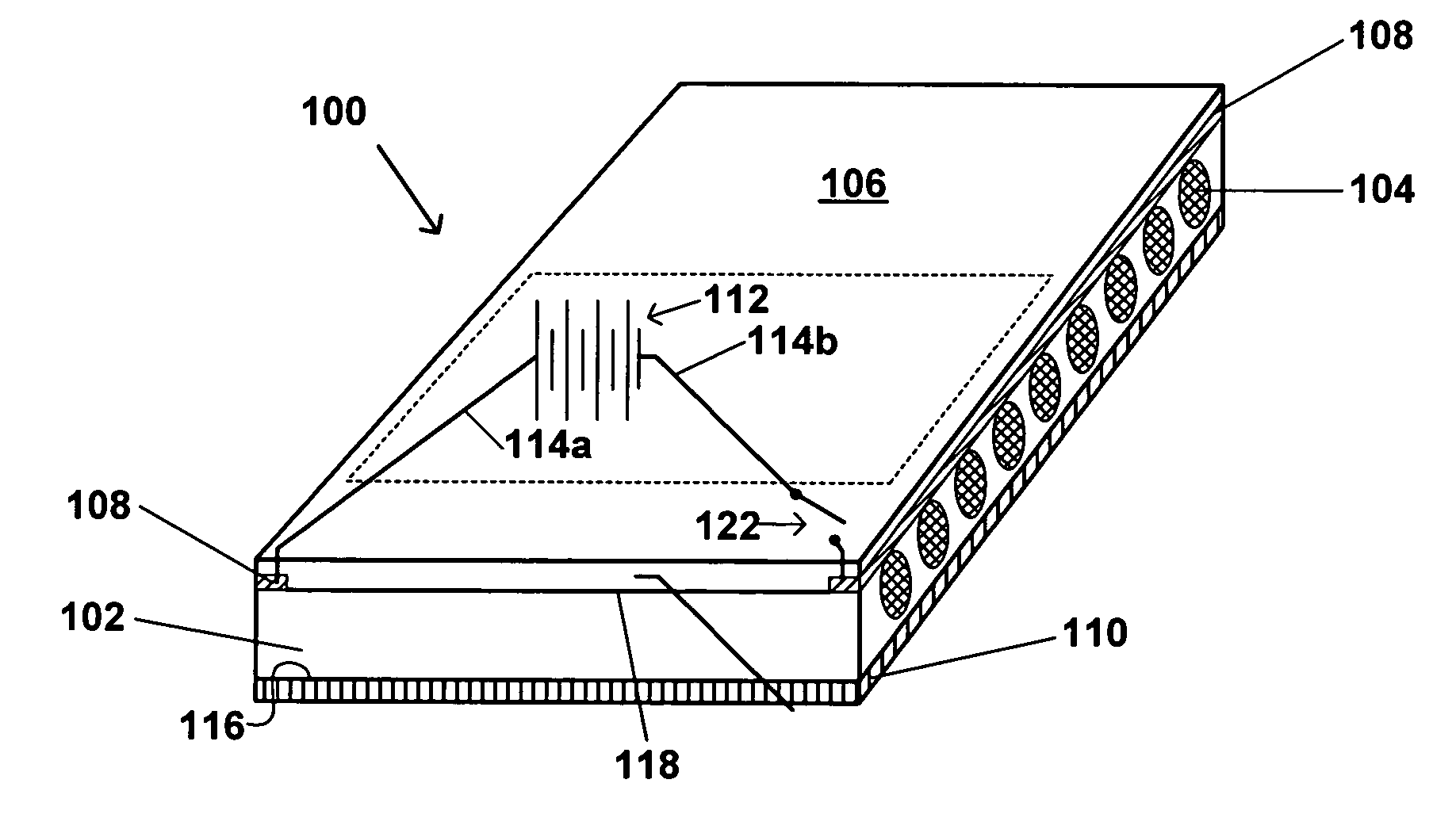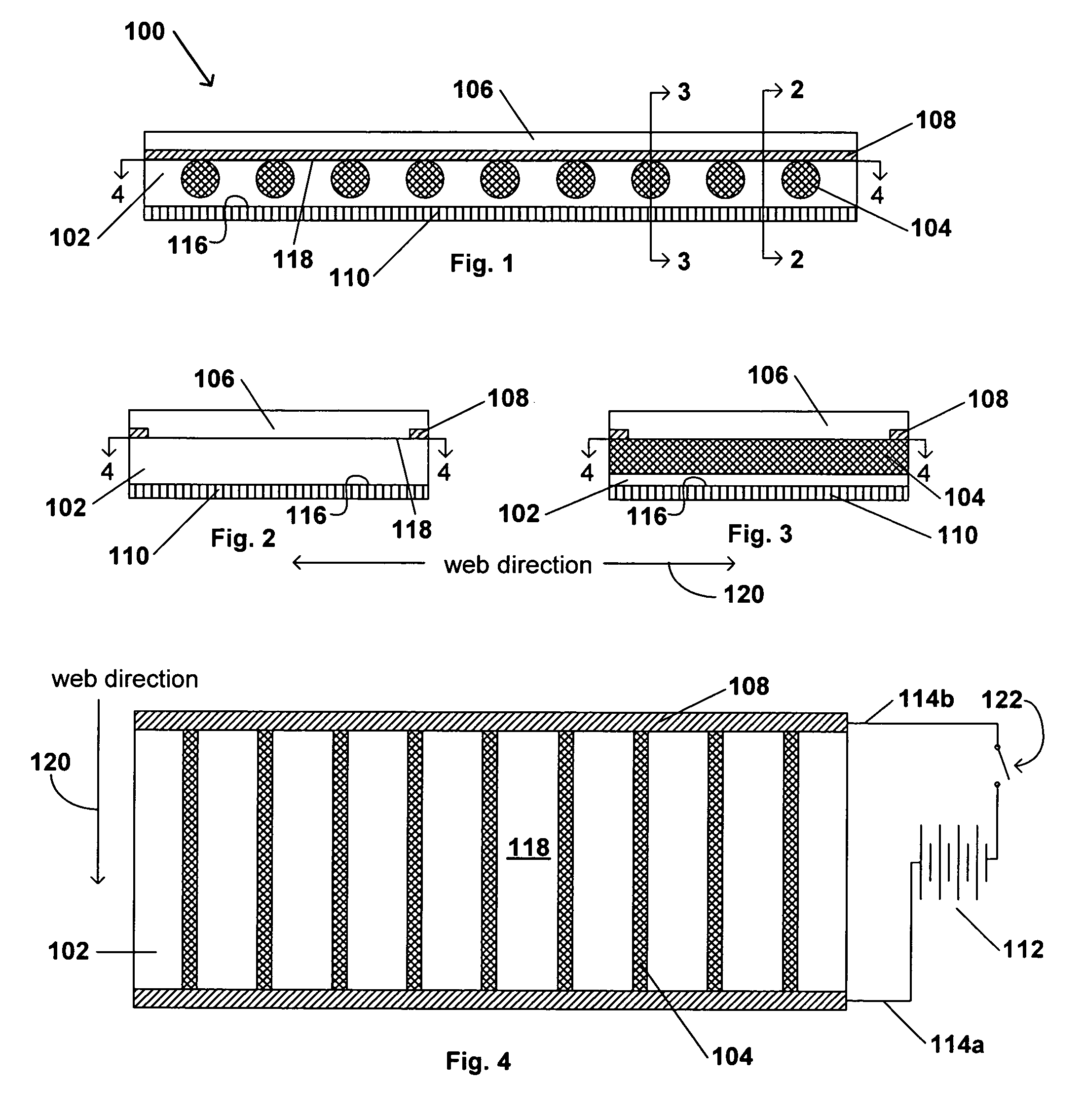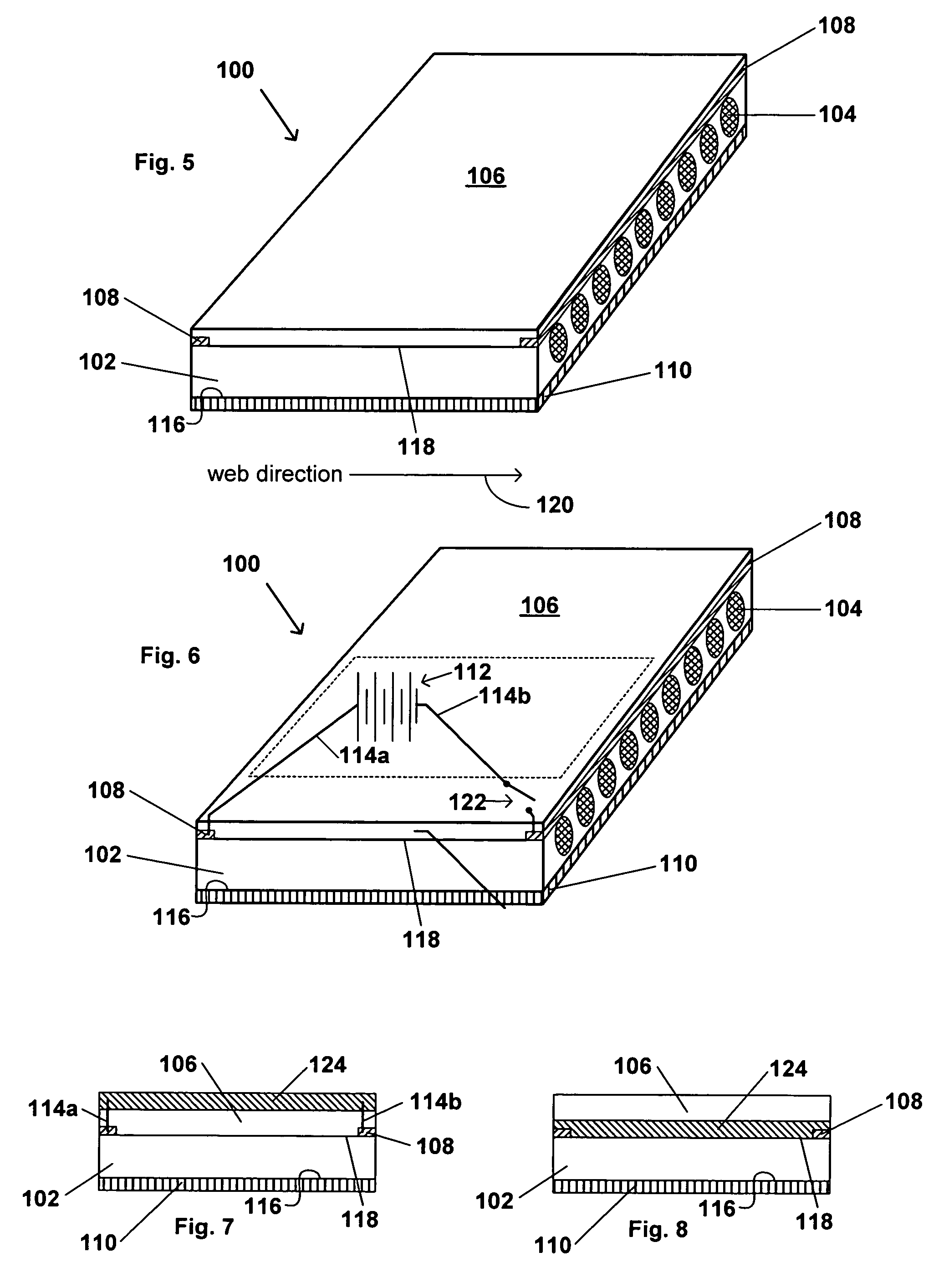Skin-contacting heatable dressing
a skin-contacting, heat-absorbing technology, applied in the field of dressings, can solve the problems of tissue damage, increased local blood flow, degree of vasodilation, etc., and achieve the effect of safe and effective heat, substantial degree of mobility and freedom of movemen
- Summary
- Abstract
- Description
- Claims
- Application Information
AI Technical Summary
Benefits of technology
Problems solved by technology
Method used
Image
Examples
example
[0160]An exemplary dressing in accordance with an embodiment of the present invention is prepared as follows. Four carbon fibers are placed in parallel arrangement 1 cm apart on a 10 cm×5 cm polyurethane backing material. A solvent-based acrylic adhesive is laminated on the polyurethane backing, so that the fibers are embedded within the adhesive. The fibers are Bekintex fibers from Bekaert Corporation.
[0161]Each side of the dressing is connected to a source of electrical energy, which is a variable voltage generator so that it is possible to change voltage and correlate it to temperature. A temperature probe is placed on the surface of the pressure sensitive adhesive to evaluate the temperature of the dressing. A temperature of 37.4° C. is reached with 8 volts applied to the dressing and a temperature of 45.5° C. is reached with 12 volts applied to the dressing.
PUM
| Property | Measurement | Unit |
|---|---|---|
| temperature | aaaaa | aaaaa |
| temperature | aaaaa | aaaaa |
| temperature | aaaaa | aaaaa |
Abstract
Description
Claims
Application Information
 Login to View More
Login to View More - R&D
- Intellectual Property
- Life Sciences
- Materials
- Tech Scout
- Unparalleled Data Quality
- Higher Quality Content
- 60% Fewer Hallucinations
Browse by: Latest US Patents, China's latest patents, Technical Efficacy Thesaurus, Application Domain, Technology Topic, Popular Technical Reports.
© 2025 PatSnap. All rights reserved.Legal|Privacy policy|Modern Slavery Act Transparency Statement|Sitemap|About US| Contact US: help@patsnap.com



